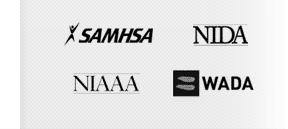Do You Struggle with Alcohol Abuse? Seek Treatment Before It’s Too Late
According to the National Institute on Alcohol Abuse and Alcoholism, approximately 16.3 million adults struggle with alcohol use disorder. This means that 6.8% of the American population reports difficulty with alcohol abuse. Given that part of alcoholism is a basic denial of having a problem, it is likely that these numbers are slightly lower than predicted due to the self-reporting criteria of this data. How can someone know if they are struggling with alcohol abuse?
What is Alcohol Abuse?
Simply defined, alcohol abuse means drinking to the point of drunkenness to the extent that it causes problems. The DSM 5, classified alcoholism, alcohol abuse and alcohol dependence into one all-encompassing category known as Alcohol Use Disorder (AUD). Alcohol use disorder means drinking more than intended, more often than intended, despite negative consequences.
What are the Signs and Symptoms?
There are many tell-tale signs that alcohol abuse is looming its ugly head. An honest person can discover problem drinking by looking clearly at the warning signs. Here are a few:

Feeling depressed when not drinking is a sign of an alcohol use disorder.
- Drinking more or longer than intended
- Thinking about drinking
- Finding difficulty avoiding alcohol
- Experiencing family or relationship difficulties due to alcohol
- Blacking out (memory loss) while drinking
- Feeling depression when not drinking
- Vowing to stop drinking only to start again
Doesn’t Everyone Experience Times of Heavy Drinking?
Many people believe that everyone experiences times of heavy drinking. While alcohol use and social drinking are prevalent in our society, this simply isn’t the case. Some people drink moderately their entire lives without ever drinking to drunkenness. Others occasionally imbibe heavily in alcohol and swear off for months or years afterward. Abusing alcohol habitually is classified as Alcohol Use Disorder.
How Does Alcohol Work in the Brain?
Alcohol binds directly to the GABA receptors in the brain, causing a sedation effect. GABA receptors regulate activity of chemicals, like serotonin and dopamine, naturally produced to aid in mood stabilization. Alcohol allows the ion channels to stay open for longer periods of time, slowing neural activity and response times due to the manner in which the GABA receptors are impaired.
What Constitutes Alcohol Dependence?
With habitual use, a tolerance develops with relation to the amount of alcohol needed to achieve the same level of euphoria at the beginning of use. Many alcoholics report chasing the initial buzz, eventually finding they never receive the same effect achieved during their first encounters with alcohol. Alcohol abusers require more and more to achieve the feelings of peace and comfort that once came easily with a few drinks. Mental obsession, cravings and physical dependence go hand-in-hand, leading alcohol abusers to fruitlessly chase the high.
Do I Really Need Treatment?
Whether or not to seek treatment is an intensely personal choice. However, because alcohol creates a physiological craving in the brain, it can be difficult to stop, even if physical dependence is not a concern. Without changing behavior patterns that develop during periods of alcohol abuse, quitting can feel like an impossibility.
What Types of Treatment are Available?
There are several types of treatment available for alcohol abusers. It is important to talk to an addiction specialist to determine which treatment is best. Seeking help early with AUD can save a lifetime of heartache for an individual and his family. The following are treatment options:
- Detoxification with medical management
- Outpatient therapy
- Individual Counseling
- Inpatient rehabilitation
- Short term rehabilitation
- Long term care including residential care
When College Drinking Becomes a Lifestyle: The Long Term Effects of Alcohol Abuse
Resources
National Institute on Alcohol Abuse and Alcoholism (2016). Alcohol use disorder: A comparison between DSM-IV and DSM-5. NIH. Pub. No. 13-7999. Retrieved from: http://pubs.niaaa.nih.gov/publications/dsmfactsheet/dsmfact.pdf
National Institute on Drug Abuse (2012). Principles of drug addiction treatment: A research-based guide. NIH. Retrieved from: https://www.drugabuse.gov/publications/principles-drug-addiction-treatment-research-based-guide-third-edition/drug-addiction-treatment-in-united-states/types-treatment-programs
US National Library of Medicine (2016). Alcoholism and alcohol abuse. Medline Plus. Retrieved from: https://medlineplus.gov/alcoholismandalcoholabuse.html
Olsen, R & DeLorey, T. (1999). GABA receptor physiology and pharmacology. Basic Neurochemistry: Molecular, Cellular and Medical Aspects (6th Ed.). Retrieved from : https://www.ncbi.nlm.nih.gov/books/NBK28090/





